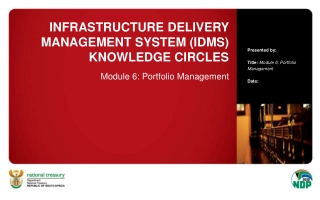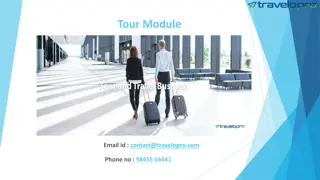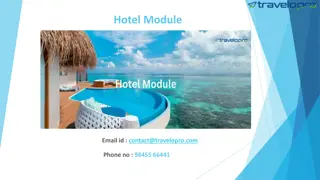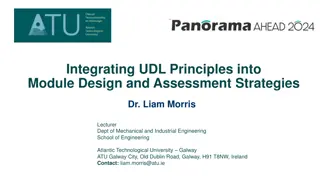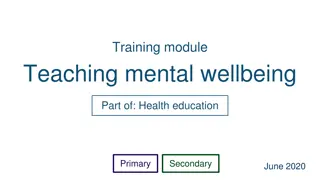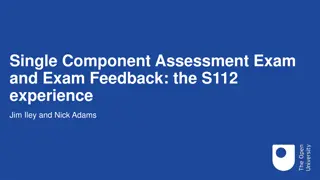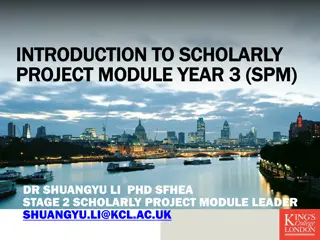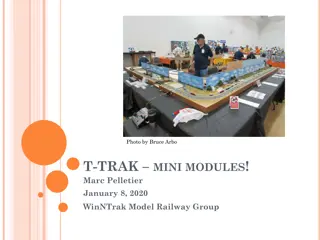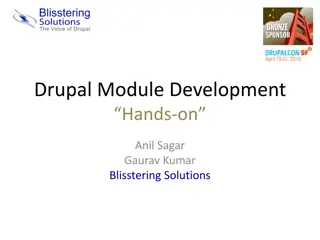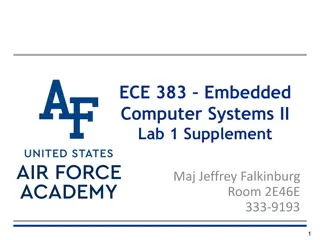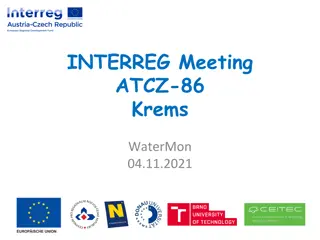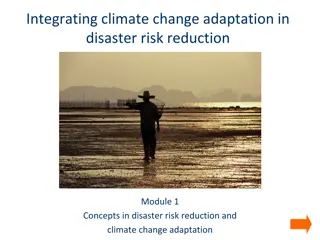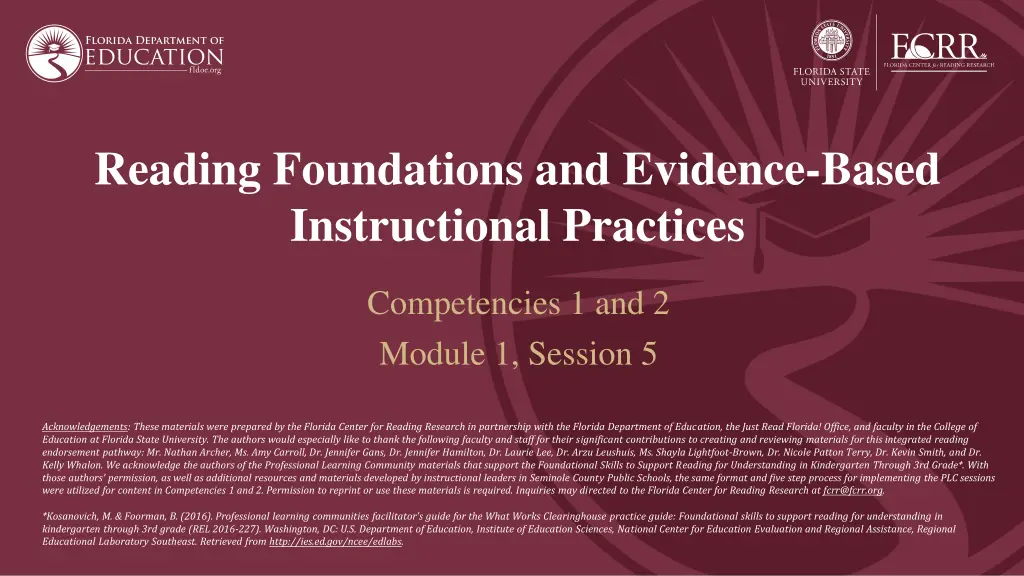
Developing Phonological Awareness and Letter-Sound Relations in Literacy Instruction
Enhance literacy instruction by developing phonological awareness and letter-sound relations through evidence-based practices. This comprehensive program integrates recommendations and strategies to support students in recognizing and manipulating speech sounds, teaching letter-sound relationships, and linking this knowledge to phonemic awareness. Dive into structured sessions and activities to bolster reading foundations effectively.
Download Presentation

Please find below an Image/Link to download the presentation.
The content on the website is provided AS IS for your information and personal use only. It may not be sold, licensed, or shared on other websites without obtaining consent from the author. If you encounter any issues during the download, it is possible that the publisher has removed the file from their server.
You are allowed to download the files provided on this website for personal or commercial use, subject to the condition that they are used lawfully. All files are the property of their respective owners.
The content on the website is provided AS IS for your information and personal use only. It may not be sold, licensed, or shared on other websites without obtaining consent from the author.
E N D
Presentation Transcript
Reading Foundations and Evidence-Based Instructional Practices Competencies 1 and 2 Module 1, Session 5 Acknowledgements: These materials were prepared by the Florida Center for Reading Research in partnership with the Florida Department of Education, the Just Read Florida! Office, and faculty in the College of Education at Florida State University. The authors would especially like to thank the following faculty and staff for their significant contributions to creating and reviewing materials for this integrated reading endorsement pathway: Mr. Nathan Archer, Ms. Amy Carroll, Dr. Jennifer Gans, Dr. Jennifer Hamilton, Dr. Laurie Lee, Dr. Arzu Leushuis, Ms. Shayla Lightfoot-Brown, Dr. Nicole Patton Terry, Dr. Kevin Smith, and Dr. Kelly Whalon. We acknowledge the authors of the Professional Learning Community materials that support the Foundational Skills to Support Reading for Understanding in Kindergarten Through 3rd Grade*. With those authors' permission, as well as additional resources and materials developed by instructional leaders in Seminole County Public Schools, the same format and five step process for implementing the PLC sessions were utilized for content in Competencies 1 and 2. Permission to reprint or use these materials is required. Inquiries may directed to the Florida Center for Reading Research at fcrr@fcrr.org. *Kosanovich, M. & Foorman, B. (2016). Professional learning communities facilitator s guide for the What Works Clearinghouse practice guide: Foundational skills to support reading for understanding in kindergarten through 3rd grade (REL 2016-227). Washington, DC: U.S. Department of Education, Institute of Education Sciences, National Center for Education Evaluation and Regional Assistance, Regional Educational Laboratory Southeast. Retrieved from http://ies.ed.gov/ncee/edlabs.
RECOMMENDATION TWO Develop awareness of the segments of sounds in speech and how they link to letters.
Recommendations 1. Teach students academic language skills, including the use of inferential knowledge and narrative language, and vocabulary knowledge. 2. Develop awareness of the segments of sounds in speech and how they link to letters. 2. recognize words. Teach students to decode words, analyze word parts, and write and 4. reading accuracy, fluency, and comprehension. Ensure that each students read connected text every day to support
Recommendation 2 addresses evidence-based ways in which to teach phonological awareness and letter sounds. The previous PLC session covered How-to Step 1, recognizing and manipulating segments of sounds in speech. Define the goal for this session by reading How-to Steps 2 and 3: Teach students letter-sound relations and use word-building and other activities to link students knowledge of letter sound relationships with phonemic awareness. Discuss thoughts or questions about the recommendation and How-to steps.
SESSION 5: LETTER SOUND RELATIONS Develop awareness of the segments of sounds in speech and how they link to letters. How-to Step 2: Teach students letter-sound relations. How-to Step 3: Use word-building and other activities to link students knowledge of letter sound relationships with phonemic awareness.
Access Prior Knowledge: Work in small groups of two to three to describe how you teach students letter sounds. Share with the whole group one idea discussed. Discuss how word-building and other activities can be used to link students knowledge of letter sound relationships with phonemic awareness. Discuss what challenges you are currently facing when teaching students letter sounds. Discuss challenges you are currently facing when teaching students to link knowledge of letter sound relationships with phonemic awareness.
Move Into New Learning: Researchers have found that once students have learned how to isolate phonemes in speech (phonemic awareness), we should teach students each letter of the alphabet and their corresponding sounds, working with a few phonemes at a time.
Move Into New Learning: Review the information found in How-to Step 2 on pages 18-19 of the practice guide. Discuss the following: a. What sequence is recommended when teaching letter sound relations? b. What does the panel recommend about teaching consonant blends (e.g., fl, sm, st)? c. How should digraphs (e.g., sh, th, ch) be taught? d. Discuss the instructional procedure for teaching a new letter sound (page 19 of the practice guide).
Video 17: LetterSounds Review Activity 19: Video Viewing Guide, Teaching Letter Sounds. After watching, discuss: What did students learn? What steps did the teacher take to reach this goal? How was the lesson taught explicitly? How was feedback provided to the students? What materials or resources did the teacher use? What did you notice about the degree to which the students appeared attentive and interested?
Review How-to step 3 on pages 19-20 of the practice guide. Discuss word-building and other activities to link students knowledge of letter sound relationships with phonemic awareness: What is the final step in teaching students the alphabetic principle? How does this step support students literacy learning? What materials/resources can teachers use during word- building activities? Review Example 2.5: Advanced word-building on page 20. Discuss how this type of activity supports students literacy learning.
Video 18: Word Building Review Activity 20: Video Viewing Guide, Word-Building. Note specific evidence provided in the practice guide about word-building. After watching, discuss: What did students learn? What steps did the teacher take to reach this goal? How was the lesson taught explicitly? How was feedback provided to the students? What materials or resources did the teacher use? What did you notice about the degree to which the students appeared attentive and interested?
Video 19: Letter Sound to Phonemic Awareness Link: CVCe Review Activity 20: Video Viewing Guide, Word-Building. Note specific evidence provided in the practice guide about word-building.
Video 20: Advanced Word Building Review Activity 20: Video Viewing Guide, Word-Building. Note specific evidence provided in the practice guide about word-building. After watching both videos, discuss: How are the strategies similar to or different from the way you teach? In light of what you have learned about teaching advanced word-building, are there any changes you might make to instruction? Do these changes seem feasible to you?
Potential Obstacles for Implementing Recommendation 2 Review page 21. Discuss the panel s advice to these obstacles. Obstacle 2.1- Many students mix up letter shapes and sounds. Obstacle 2.2- Some students have persistent problems with phonological awareness. Discuss obstacles you have experienced and ways in which you have overcome them.
Review Activity 21: Word-Building Lesson Plan Example, which provides an example of a word-building lesson. Then, review Activity 22: Word-Building Lesson Plan Template.
Implement: Complete the activity: Select a letter sound or word pattern (e.g., CVCe) that, based on data, at least some students in their class need to develop. It should be different from the one you selected for the previous small group activity. Use Activity 22: Word-Building Lesson Plan Template to develop a lesson designed to teach the selected skill. Teach the lesson to students.
Reflect: Is there anything you learned during this session that either confirms or contradicts what you already knew about teaching letter sound relations? What about using word building and other activities to link students knowledge of letter sounds with phonemic awareness? Brainstorm ideas about what strategies you would add or change to teach students letter sound relations and how to link students knowledge of letter sound relationships with phonemic awareness. Discuss ideas for how to implement these additional strategies. What data will you use to determine whether the additions or changes you made resulted in improved student learning?
Complete Activity 23: Prepare to Share. At the start of the next PLC session, be prepared to respond to the following: Which letter sound(s)/word pattern did you teach explicitly? How did you determine which skill to teach? How many students participated in the lesson? Describe the lesson you taught and materials used. Did you teach the lesson as planned? If not, describe any adjustments you made and why you made them. How did your students respond to your instruction? How did you scaffold your instruction? How did you measure student learning?


